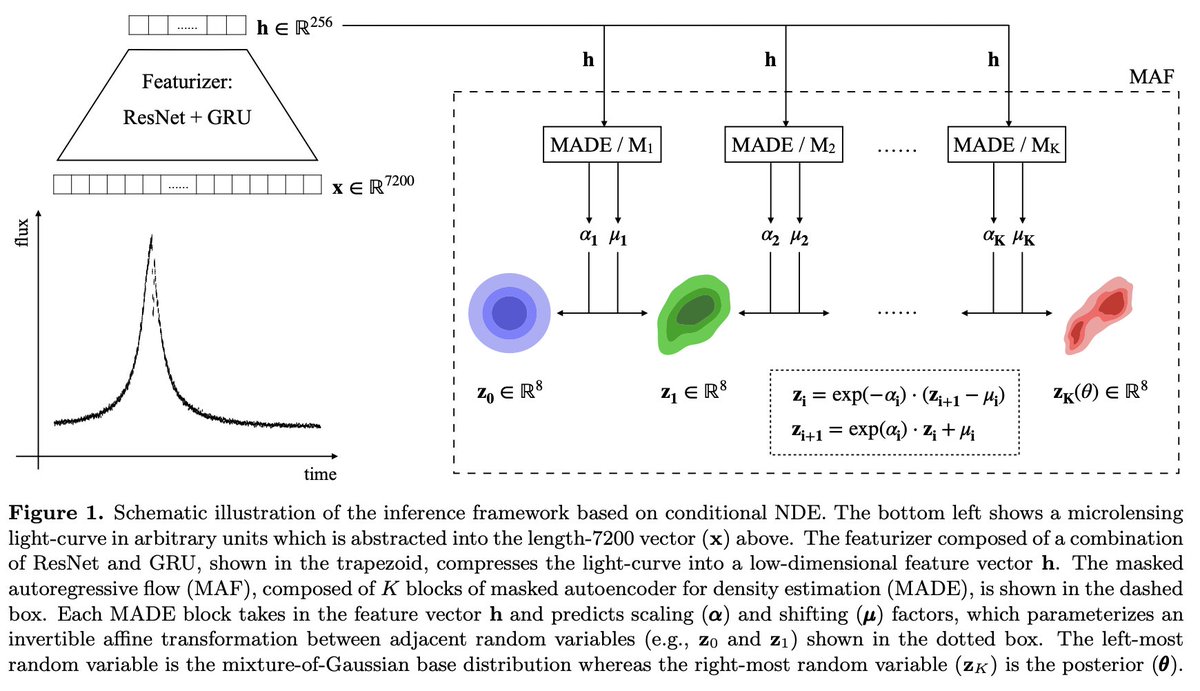
Excited to share a new paper led by @UCB_Astronomy graduate student Keming Zhang @AstroKeming (along with me and his advisor Josh Bloom @profjsb) that discusses a newly uncovered ubiquitous unifying degeneracy in planetary microlensing events. (1/16)
🧵👇
arxiv.org/abs/2111.13696
🧵👇
arxiv.org/abs/2111.13696

Gravitational microlensing is a weird and wonderful way to find planets orbiting other stars, especially cold, low-mass planets. It works by using gravity as nature’s magnifying glass to detect planets orbiting distant host stars. (2/16) 

Microlensing has already been used to discover over 100 exoplanets. But the true potential of microlensing will be realized by NASA’s Nancy Grace Roman Space Telescope @NASARoman. (3/16) 

Roman is predicted to detect ~1500 planets, with sensitivity to analogs of all the solar system planets except for Mercury, planets (and satellites!) with masses down to roughly that of the moon, and free-floating planets with masses as low as that of Mars. (4/16) 

But! microlensing light curves can sometimes be tricky to interpret. In some cases, an observed light curve can be almost perfectly well explained by two or more distinct physical models, meaning that the interpretation of that light curve is ambiguous or ‘degenerate’. 

For planetary microlensing events, several such so-called ‘degeneracies’ have been predicted and/or identified, with names such as the ‘close-wide’, ‘inner-outer’, ‘close-resonant’, and ‘wide-resonant’ degeneracies. (6/16)
It was generally thought that these degeneracies were distinct, or, at best, the relationship between them was murky. (7/16)
Here’s where Keming comes in. Keming developed a state-of-the-art Machine Learning (ML) algorithm that uses likelihood-free-inference (LFI) to infer the parameters of an observed microlensing event. (8/16)
The key to the LFI approach is the Neural Density Estimator (NDE), which is a particular type of neural network capable of learning conditional distributions that are complex and multi-modal, or degenerate. (9/16) 

By training on 691,257 simulated events like that expected with the Roman Space Telescope, Keming’s algorithm can determine the parameters of any microlensing event effectively in real time. (10/16)
Applying this algorithm, Keming noticed degeneracies that hadn’t appeared in the literature before, as well as some that had. A systematic analysis of these cases revealed that they are the result of the same unifying degeneracy, which we dubbed the ‘offset degeneracy’. (11/16)
Simply put, we found that for a large fraction of planetary microlensing events, there always exists two models with distinct separations between the planet and host star that can nearly exactly reproduce the observations. (12/16) 

Somewhat befuddled by this result, we then went back and analyzed previously published events to see why they didn’t observe this degeneracy. It turns out they did, but just didn’t realize it. (13/16) 

The discovery of this degeneracy suggests a deeper symmetry in the mathematics of planetary microlenses than has previously been recognized. It’ll be interesting to see what we learn from studying it in depth. (14/16)
Perhaps more importantly, this discovery represents a new milestone for the growing utility of ML in the physical sciences. The discovery of the offset degeneracy appears to be the first example where ML directly yields new mathematical insight in astrophysics. (15/16)
All hail our future machine overlords. (16/16)
• • •
Missing some Tweet in this thread? You can try to
force a refresh





